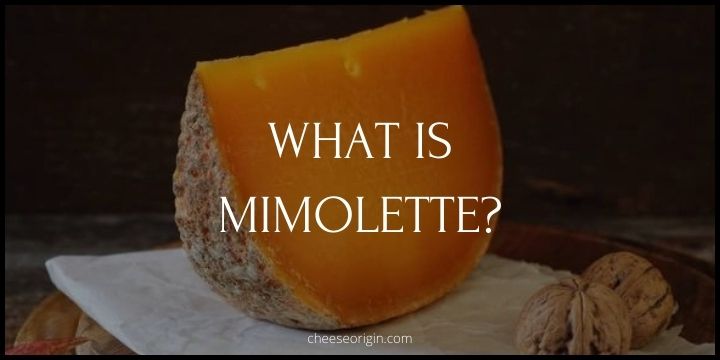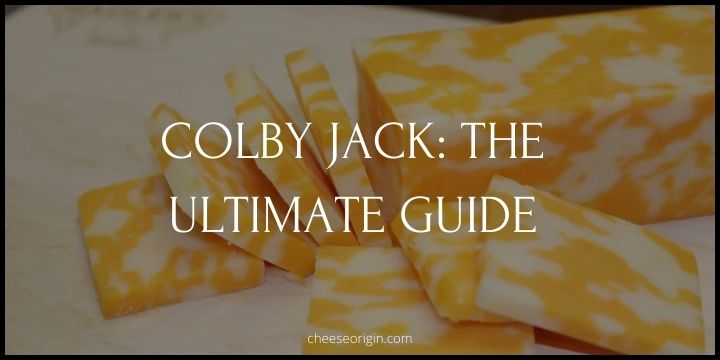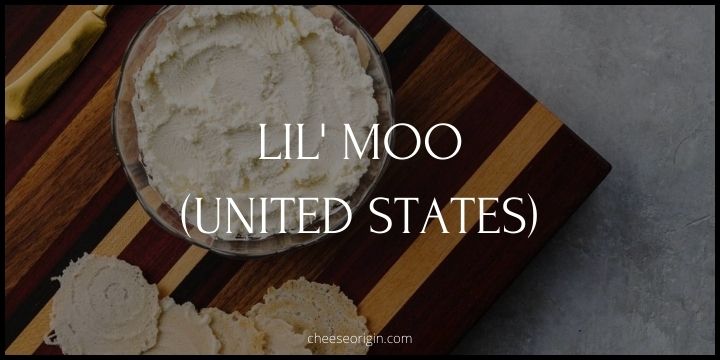What is Queso Blanco? The Melt-in-your-mouth Cheese from Mexico

If you’ve ever been intrigued by the world of Mexican cheeses, you’re in for a treat. In this guide, we will embark on a flavorful journey through the captivating universe of Queso Blanco, Mexico’s beloved white cheese.
Known for its delicate texture and mild flavor, Queso Blanco is an unaged cheese that has won the hearts of food lovers worldwide.
Whether you’re a seasoned cheese connoisseur or simply a curious foodie, this guide promises to enlighten, entertain, and perhaps even inspire your next culinary adventure.
Quick facts about Queso Blanco
| Fact | Detail |
|---|---|
| Origin | Mexico |
| Type of Milk | Cow’s Milk |
| Texture | Soft and creamy |
| Flavor | Mild, milky, and slightly salty |
| Color | White |
| Ageing Time | Fresh (not aged) |
| Best Paired With | In Mexican dishes like enchiladas and chiles rellenos, or crumbled over salads and soups |
| Nutritional Value | High in protein and calcium, but also high in fat and calories |
| Shelf Life | Best consumed within 2 weeks of purchase |
| Cooking Properties | Melts well without becoming stringy, making it perfect for cooking |
| Alternative Names | Queso de la tierra, queso fresco |
What is Queso Blanco?
Queso Blanco, which translates to “white cheese” in Spanish, is a type of Mexican cheese that’s known for its smooth and creamy texture. It is a fresh, unaged cheese made primarily from cow’s milk, although some variations use a combination of cow’s and goat’s milk.
The flavor profile of Queso Blanco is mild, milky, and slightly salty. It’s a versatile cheese, often used in a variety of dishes including enchiladas, chiles rellenos, and even crumbled over salads and soups. One unique property of Queso Blanco is that it softens when heated, but does not melt or become stringy, making it an ideal ingredient for cooking.
In terms of nutritional value, it is high in protein and calcium, yet also high in fat and calories. It’s a staple in many Mexican kitchens and is gaining popularity worldwide due to its delightful taste and texture.
What does Queso Blanco taste like
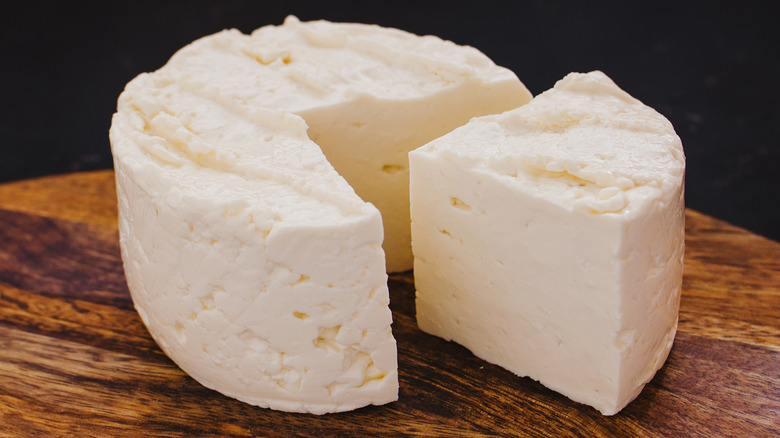
Queso Blanco has a unique flavor profile that is often described as mild, milky, and slightly salty. It doesn’t have a strong or overpowering taste, which makes it a versatile ingredient in many dishes. Its flavor is somewhat reminiscent of fresh milk, with a subtle tanginess that gives it a pleasant and refreshing taste.
The texture of Queso Blanco also adds to its appeal. It’s soft and creamy, yet firm enough to hold its shape when sliced or crumbled. When heated, it softens but does not melt completely, retaining some of its original texture while imparting a delicious creaminess to the dish.
Overall, the taste of Queso Blanco is subtle and delicate, making it a perfect companion to stronger flavors in various culinary creations.
Queso Blanco tasting notes
- Flavor: Queso Blanco has a mild and subtle flavor that is not overpowering. It’s slightly salty with a hint of tanginess.
- Milkiness: The cheese has a distinct milky taste, reminiscent of fresh cow’s milk. This gives it a clean and refreshing flavor.
- Saltiness: Despite its mildness, Queso Blanco has a slightly salty taste that adds depth to its overall flavor profile.
- Texture: Queso Blanco is soft and creamy, yet firm enough to hold its shape when sliced or crumbled. This texture complements its mild flavor well.
- Heat Response: When heated, the cheese softens but does not melt completely, which allows it to retain some of its original texture. This makes it a great addition to warm dishes where you want a cheese that can withstand heat without losing its form.
- Pairing: Its mild and versatile flavor pairs well with a variety of foods, from spicy Mexican dishes to fresh salads and soups.
- Aftertaste: Queso Blanco leaves a light, pleasant aftertaste that isn’t overly strong or lingering. This makes it suitable for both savory and slightly sweet dishes.
What is Queso Blanco made of? The ingredients that made up Queso Blanco
Queso Blanco is a simple and fresh cheese, made from just a few basic ingredients.
- Milk: The primary ingredient in Queso Blanco is cow’s milk. Some variations might use a combination of cow’s and goat’s milk. The type and quality of the milk used can significantly influence the flavor and texture of the final product.
- Acidifying Agent: An acidifying agent such as lemon juice, vinegar, or citric acid is used to curdle the milk. This separation of curds from the whey is a crucial step in cheese-making.
- Salt: Salt is added for flavor and also to help preserve the cheese. It enhances the natural flavors of the milk and acid.
- Rennet: While not always used in traditional recipes, some modern versions of Queso Blanco may use rennet (an enzyme) to further encourage the milk to curdle.
Once these ingredients are combined, the mixture is heated until curds form. The curds are then strained from the whey and pressed to remove excess moisture. The resulting cheese is Queso Blanco, a firm but creamy cheese that holds its shape well when heated.
It’s worth noting that Queso Blanco is a fresh cheese, meaning it’s meant to be consumed soon after it’s made and doesn’t undergo an aging process like some other types of cheese.
Is Queso Blanco like Mozzarella?
While Queso Blanco and Mozzarella are both white cheeses with a mild flavor, they have several differences that distinguish them from each other.
| Feature | Queso Blanco | Mozzarella |
|---|---|---|
| Origin | Mexico | Italy |
| Taste | Mild with a slight tanginess | Mild with a slightly sweet, milky taste |
| Texture | Firmer, doesn’t melt completely | Soft, stretchy, and melts well |
| Production | Often made with an acidifying agent (like vinegar or lemon juice) | Traditionally made using rennet |
| Use in Cuisine | Commonly used in Mexican and Latin American cuisines. Used in enchiladas, chiles rellenos, and queso fundido | Staple in Italian cuisine. Used in Caprese salad, lasagna, and pizza |
| Shelf Life | As a fresh cheese, it is meant to be consumed soon after production | Can be consumed fresh but also has versions (like low-moisture Mozzarella) that have a longer shelf life |
| React to heat | Holds its shape when heated (doesn’t melt completely), suitable for grilling or frying | Known for its gooey and stretchy quality when melted |
While they may seem similar at first glance, Queso Blanco and Mozzarella have distinct characteristics that make them unique.
>> Click here to read our in-depth guide on Mozzarella
What is Queso Blanco similar to? 10 best substitutes
| Substitute | Explanation |
|---|---|
| Monterey Jack | This is a semi-hard cheese with a mild and creamy flavor, similar to Queso Blanco. It also melts well, making it a good substitute in recipes where Queso Blanco is melted. |
| Mozzarella | Mozzarella has a mild flavor and creamy texture that can closely mimic Queso Blanco. However, it has a more stretchy quality when melted. |
| Paneer | This Indian cheese is non-melting and has a similar texture to Queso Blanco. It’s a great option for grilling or frying. |
| Halloumi | Halloumi is a Cypriot cheese that holds its shape when heated, much like Queso Blanco. It has a slightly stronger flavor but can be a good alternative. |
| Feta | Feta has a tangy flavor and crumbly texture. Though the flavor is stronger, it can be used as a substitute in salads and other cold dishes. |
| Ricotta Salata | This is a firm version of Ricotta cheese. It’s slightly salty but has a mild flavor and can be grated, making it a decent substitute for Queso Blanco. |
| Queso Fresco | Queso Fresco is another Mexican cheese with a similar mild flavor. It’s softer than Queso Blanco and doesn’t hold up as well to heat. |
| Farmer’s Cheese | This is a mild, creamy cheese that can work as a substitute in many dishes. It’s also easy to make at home. |
| Cotija | Cotija is a crumbly Mexican cheese with a stronger flavor. It can be a good substitute in dishes where the cheese is sprinkled on top. |
| Tofu | For a non-dairy alternative, firm tofu can mimic the texture of Queso Blanco. It’s also a good option for those with dietary restrictions. |
How to Make the Best Queso Blanco Dip at Home – A step-by-step guide
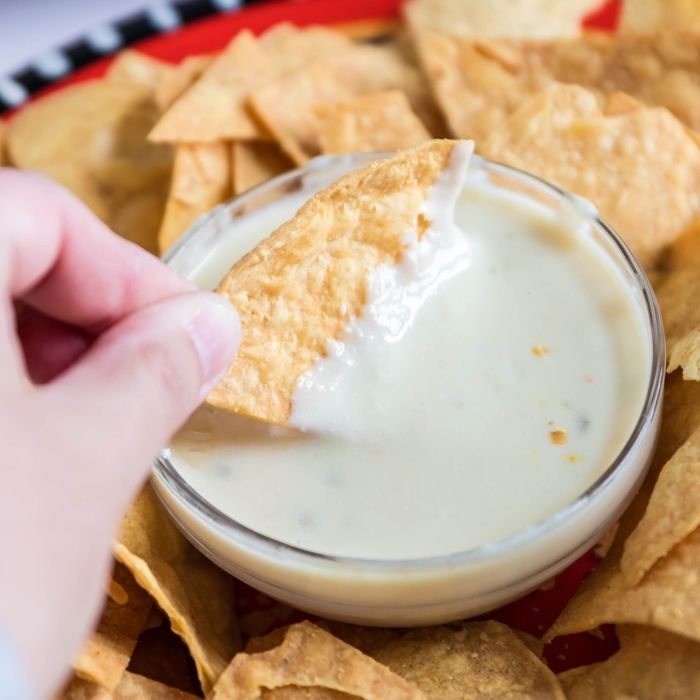
Ingredients:
- 1 lb (450g) Queso Blanco
- 1 cup whole milk
- 2 tablespoons unsalted butter
- 2 cloves garlic, minced
- 1 small onion, finely chopped
- 1 medium tomato, finely chopped
- 1 jalapeno, finely chopped (optional for heat)
- Juice of 1 lime
- Salt to taste
Materials:
- A medium-sized pot or saucepan
- Whisk
- Cutting board and knife
Instructions:
- Start by prepping your ingredients. Finely chop the onion, tomato, and jalapeno if using. Mince the garlic and cut the Queso Blanco into small chunks for easier melting.
- In your medium-sized pot or saucepan, melt the butter over medium heat. Add the finely chopped onion and cook until it starts to become translucent, about 3-5 minutes.
- Add the minced garlic to the pot and cook for another minute, until aromatic.
- Next, add the chunks of Queso Blanco, stirring consistently with your whisk. Lower the heat to medium-low to prevent the cheese from burning.
- Gradually add the milk while continuing to whisk. The cheese should start to melt and combine with the milk to form a creamy dip.
- Once the cheese has fully melted, add in the chopped tomato and jalapeno. Stir well to combine.
- Squeeze in the juice of one lime and add salt to taste. Stir once more to combine.
- Remove the dip from the heat. It will continue to thicken as it cools.
Serving Suggestions:
Serve your Queso Blanco Dip warm with a side of tortilla chips, pretzels, or fresh vegetables for dipping. This dip also works great drizzled over nachos or used as a topping for tacos or burritos.
Tips:
- For a smoother dip, you can blend the cooked onion and garlic with a little bit of milk before adding it to the cheese.
- If the dip becomes too thick, simply add a bit more milk and heat it over low heat until it reaches your desired consistency.
- If you prefer a spicier dip, you can add more jalapenos or even some hot sauce for an extra kick.
Enjoy your homemade Queso Blanco Dip at your next party or gathering!
What pairs well with Queso Blanco?

Food that goes well with Queso Blanco
| Category | Food Items |
|---|---|
| Meat Dishes | BBQ Chicken Wings, Ground Beef Tacos, Chicken Burritos |
| Vegetables | Grilled vegetables, Raw vegetables |
| Breads | Pretzel bites, Garlic bread, Bread sticks |
| Salads | Mexican salad, Crunchy salad |
| Potato Dishes | Potato wedges, Sweet potato fries, Mashed potatoes |
| Snacks | Chips, Soft pretzels, French fries, Wings, Poppers |
| Mexican Dishes | Huevos Rancheros, Scrambled Eggs With Queso Fresco, Savory Swiss Chard Vegetarian Tacos, Chicken Tinga Tacos |
| Fruit | Spicy Pineapple |
Also read: 11 Best Crackers that Pair Well with Cheese
Beverage that goes well with Queso Blanco
| Category | Beverage Items |
|---|---|
| Alcoholic Drinks | Light Beers, Margaritas, Tequila |
| Non-Alcoholic Drinks | Limeade, Iced Tea, Lemonade |
| Wine | Sauvignon Blanc, Chardonnay |
| Cocktails | Mojito, Bloody Mary |
| Soft Drinks | Cola, Ginger Ale |
Also read: Best Wine and Cheese Pairings: The Ultimate Guide
Is Queso Blanco a healthy cheese?
Whether Queso Blanco is considered a healthy cheese can largely depend on individual dietary needs and consumption quantity.
Queso Blanco is a fresh, white, soft cheese made from raw cow or goat’s milk curdled with apple cider vinegar. A 118g serving of Queso Blanco contains approximately 366 calories, 29g of fat, 24g of protein, and 3g of carbohydrate. The calorie breakdown is about 71% fat, 3% carbs, and 26% protein.
Queso Blanco does provide some key nutrients. It is an excellent source of Vitamin B12, Calcium, Phosphorus, Sodium, and Zinc. These nutrients are essential for various bodily functions such as bone health, cell metabolism, and immune function.
However, like many cheeses, Queso Blanco is high in fat and calories, which could potentially contribute to weight gain if consumed in large amounts. Therefore, it should be eaten in moderation as part of a balanced diet.
Additionally, the sodium content may be high, which could be a concern for individuals with high blood pressure or heart disease.
On the other hand, Queso Fresco, a cheese similar to Queso Blanco, is considered healthy because it offers a balance of all three macronutrients (proteins, fats, carbohydrates), translating to a suitable range of calories.
In conclusion, Queso Blanco can be part of a healthy diet when consumed in moderation and balanced with other nutrient-rich foods.
Queso Blanco nutrition facts
| Nutrient | Quantity per 1 oz (28g) | Quantity per 1 cup crumbled (118g) |
|---|---|---|
| Calories | 100 – 120 Calories | 366 Calories |
| Fat | 7.2 – 9g | 28.7g |
| Protein | 5 – 6.1g | 24g |
| Carbohydrates | 0.8 – 4g | 3g |
| Sugar | 0.5g | 2.1g |
The History and Origin of Queso Blanco

Queso Blanco, which translates to ‘white cheese,’ is a type of cheese that offers a unique flavor and texture, making it a favorite among many cheese lovers. Its origin dates back to the early to mid-1800s when Spanish settlers in Mexico began making this fresh, crumbly cheese.
The production technique for Queso Blanco was brought over by Spanish and Portuguese immigrants, who had been making it for quite some time. It quickly gained popularity not only in Mexico but also around the world due to its versatile uses in various recipes.
Despite being commonly associated with Mexican cuisine, Queso Blanco likely has roots in Spain. The introduction of cows and the art of cheese-making by the Spanish led to the development of new cheese varieties, including Queso Blanco.
Interestingly, the first published recipe of a dish using this cheese, specifically a cheesy and slightly spicy side, can be traced back to an 1896 issue of an American magazine called “The Land”. This showcases the long-standing popularity of Queso Blanco, which continues to be a staple in many kitchens today.
In terms of its characteristics, Queso Blanco is made from pasteurized cow’s and goat’s milk. It has a fresh soft texture and is typically rindless. Despite its simplicity, this cheese offers a rich taste that enhances the flavor of various dishes, making it a beloved ingredient in many cuisines.
Frequently Asked Questions
1. Is Queso Blanco sweet?
No, Queso Blanco is not typically sweet. It is a soft, mild, and creamy cheese with a slightly salty taste. Its flavor can be described as fresh and milky. It’s often used in Latin American cuisine for its ability to complement spicy dishes without overpowering them. Its texture is smooth and it has a high melting point, allowing it to maintain its shape when heated, making it perfect for grilling or frying.
2. Is Queso Blanco a good melting cheese?
Queso Blanco is a semi-soft cheese with a high melting point, which means it softens when you heat it, but it’s difficult to melt it completely. When heated or fried, Queso Blanco will hold its shape, becoming creamy without oozing — unlike many other cheeses. This makes it ideal for grilling or frying for dishes like “queso frito” (fried cheese), where the cheese needs to hold its form. However, if you’re looking for a cheese that melts into a smooth, gooey texture for sauces or dips, other cheeses like Monterey Jack or Cheddar might be more suitable.
Also read:
- The Ultimate Guide to Mascarpone: Italy’s Creamiest Cheese
- All About Roquefort: An Insider’s Guide to the King of Blue Cheese
- Asiago Cheese: An In-depth Exploration of Nutrition and Taste
- The Ultimate Guide to Jarlsberg: Delicious and Nutritious
- Ricotta Guide: All You Need to Know About This Versatile Cheese
- The Ultimate Guide to Chèvre: Exploring Goat Cheese
- The Ultimate Guide to Kasseri: A Taste of Tradition

